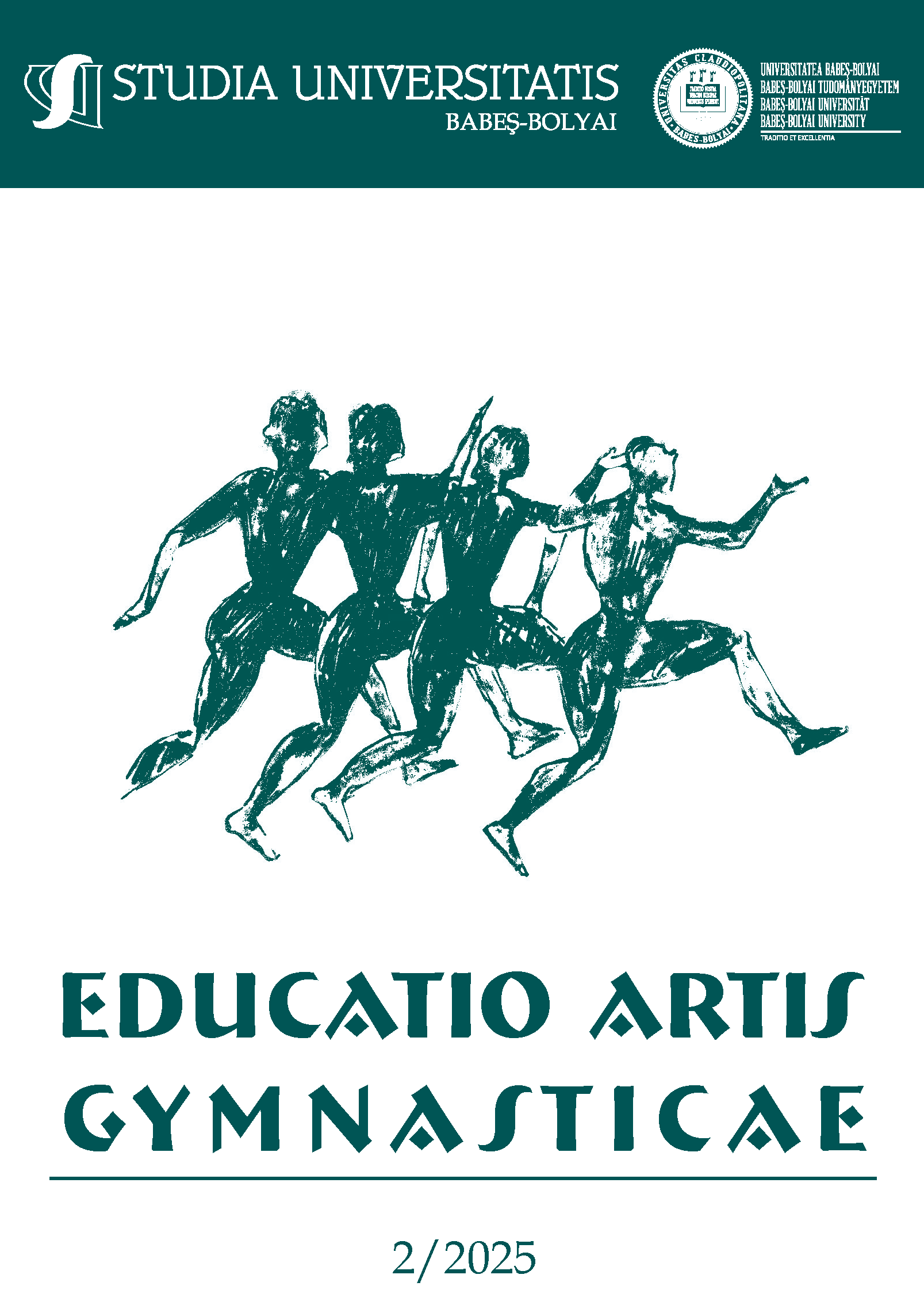Artificial Intelligence in Tennis. A Social Perspective
DOI:
https://doi.org/10.24193/subbeag.70(2).16Keywords:
artificial intelligence, tennis, social representationAbstract
Introduction: Artificial Intelligence (AI) is increasingly influencing professional sports, including tennis, by supporting technical analysis, training optimization, and decision-making processes. Understanding how different groups perceive AI in the sports context is essential for its effective integration. Objective: The study aims to explore and compare the social representations of artificial intelligence in tennis among athletes and non-athletes. Methods: The research employed the word association technique (Vergès, 2001) and the social representation indicator (Havârneanu, 2001). The sample included 60 participants, divided equally into two groups: 30 athletes and 30 non-athletes. The analysis focused on the frequency and order of appearance of words associated with AI in a sports context. Results: Distinct differences emerged between the two groups. Athletes primarily associated AI with advanced technology that enhances performance and efficiency, while aspects such as injury prevention or ethical concerns were less prominent. Non-athletes emphasized “equipment and infrastructure,” reflecting a more concrete and device-oriented perception of AI in sports. Conclusions: The study highlights divergent perceptions of AI between athletes and non-athletes, which may influence how AI-based technologies are accepted and implemented in tennis. Understanding these differences is crucial for tailoring AI applications to meet the expectations and needs of various stakeholders in sports.
Article history: Received 2025 May 30; Revised 2025 July 15; Accepted 2025 July 17; Available online 2025 July 30; Available print 2025 August 30
References
Abid, Y., Kaittan, N., Mahdi, M., Bakri, B., Omran, A., Altaee, M. & Abid, S. (2023). Development of an intelligent controller for sports training system based on FPGA. Journal of Intelligent Systems, 32(1), 20220260. https://doi.org/10.1515/jisys-2022-0260.
Apoorva, R., Arasa, D., & Jamadade, S. (2018). A survey on artificial intelligence. International Journal of Engineering Research & Technology (IJERT), 6(13); doi: 10.17577/IJERTCONV6IS13220.
Chatterjee, R., Roy, S., Islam, S., & Samanta, D. (2021). An AI approach to pose-based sports activity classification. In 2021 8th International Conference on Signal Processing and Integrated Networks (SPIN) (pp. 156–161). IEEE. https://doi.org/10.1109/SPIN52536.2021.9565996.
Havârneanu, C. (2001). Indicatorul de reprezentare socială: o metodă de cuantificare a structurii. In M. Curelaru (Coord.), Reprezentările sociale: Teorie și metode (pp. 231–244). Editura Erota.
Lin, J., Song, J., & Sun, L. (2020). The application of artificial intelligence video feedback system in tennis teaching in colleges and universities. In 2020 International Conference on Artificial Intelligence and Education (ICAIE) (pp. 28–31). IEEE. https://doi.org/10.1109/ICAIE50891.2020.00014.
Lv, L., & Xu, Y. (2021). Training path of college tennis talents based on artificial intelligence. In Proceedings of the 2021 3rd International Conference on Artificial Intelligence and Advanced Manufacture (AIAM 2021) (pp. 854–858). ACM. https://doi.org/10.1145/3495018.3495290.
Ma, K. (2020). Artificial intelligence aided training in ping pong sport education. In 2020 Second International Conference on Transdisciplinary AI (TransAI) (pp. 43–49). IEEE. https://doi.org/10.1109/TransAI49837.2020.00012.
Morandín-Ahuerma, F. (2022). What is artificial intelligence? International Journal of Research Publication and Reviews, 3(12), 1947–1951. https://doi.org/10.55248/gengpi.2022.31261.
Özdemir, O. (2019). Impact of racquet evolution: How new technologies affected tennis players’ statistics? International Journal of Physical Education, Sports and Health, 10(1), 11–20.
Vergès, P. (2001). Evocarea banului. O metodă pentru definirea nucleului central al unei reprezentări. In M. Curelaru (Coord.), Reprezentările sociale: Teorie și metode (pp. 213–230). Editura Erota.
Sampaio, T., Oliveira, J., Marinho, D., Neiva, H., & Morais, J. (2024). Applications of machine learning to optimize tennis performance: A systematic review. Applied Sciences, 14(13), 5517. https://doi.org/10.3390/app14135517.
Wang, J., & Li, S. (2024). The current situation, characteristics and prospects of the research on tennis theme literature in China from the perspective of artificial intelligence. Journal of Electrical Systems, 20(3), 135–143. https://doi.org/10.52783/jes.2366.
Wu, C., Wu, T., & Lin, W. (2023). Exploration of applying pose estimation techniques in table tennis. Applied Sciences, 13(3), 1896. https://doi.org/10.3390/app13031896.
Yin, S. (2021). Artificial intelligence-based tennis match technique and tactics evaluation system. In L. Wang, K. Xu, & S. Zhang (Eds.), Proceedings of the International Conference on Applications and Techniques in Cyber Intelligence (pp. 548–555). Springer. https://doi.org/10.1007/978-3-030-79200-8_82.
Downloads
Published
How to Cite
Issue
Section
License
Copyright (c) 2025 Studia Universitatis Babeş-Bolyai Educatio Artis Gymnasticae

This work is licensed under a Creative Commons Attribution-NonCommercial-NoDerivatives 4.0 International License.



